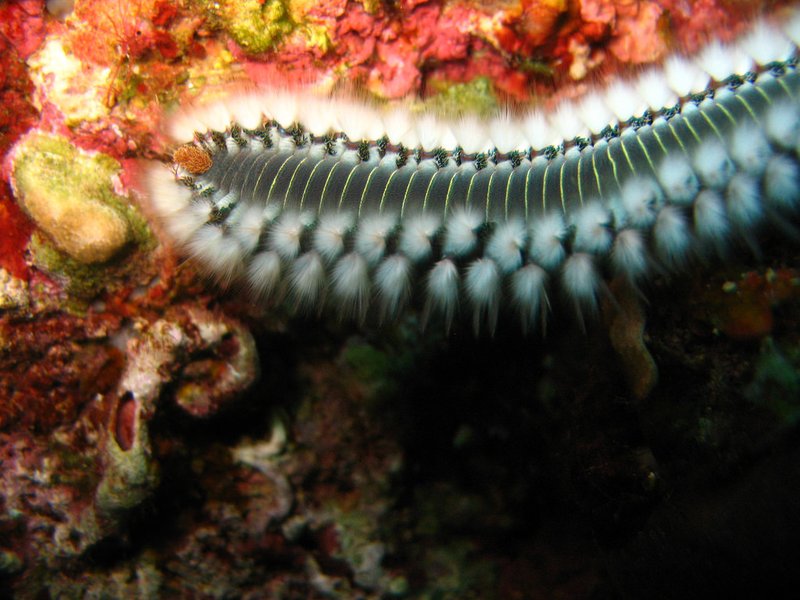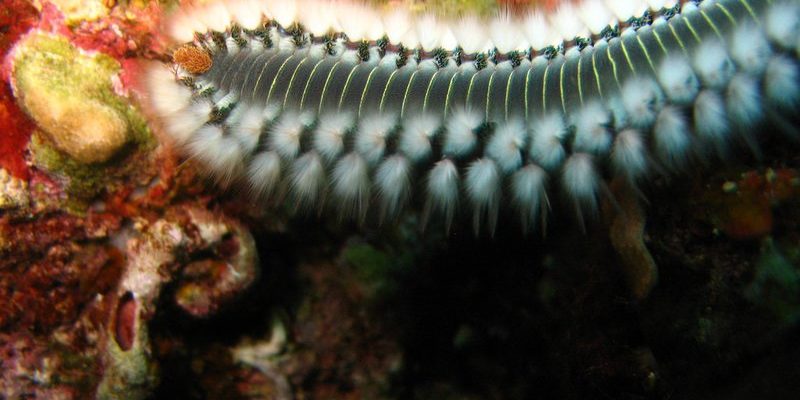
These worms may not have the glamor of a sea turtle or a clownfish, but they perform vital functions that keep our oceans thriving. From breaking down organic matter to serving as a food source for a variety of marine animals, polychaetes are essential players in the underwater drama that unfolds beneath the waves. In this article, we’ll dive deep into their ecological importance, exploring why we should care about these seemingly simple creatures.
What Are Marine Polychaetes?
Marine polychaetes are a remarkable group of annelid worms, characterized by their segmented bodies and bristly appendages called ‘chaetae’. These bristles serve multiple purposes, such as locomotion and anchorage. You might find polychaetes in different marine environments—from the sandy seabed to the rocky shores and even deep-sea habitats. Some species can even survive in extreme conditions, like hydrothermal vents, showcasing their adaptability.
There are over 10,000 known polychaete species, each with unique adaptations. For instance, some are tube-dwelling, creating protective homes from sand or mucus, while others are free-swimming, gracefully moving through the water. This diversity allows them to occupy various ecological niches, contributing to the overall health of marine ecosystems.
Vital Role in Nutrient Cycling
Here’s the thing: without marine polychaetes, our ocean environments would struggle to maintain balance. These worms are meticulously involved in nutrient cycling, a process essential for the health of ocean ecosystems. They feed on dead organic matter, such as decaying plant and animal material, breaking it down into simpler compounds. This decomposition enriches the sediment, making essential nutrients available for other organisms, including plants and smaller marine creatures.
When polychaetes digest this organic material, they convert it into nutrients that are then released back into the ecosystem. Think of them as nature’s recyclers. By continuously breaking down waste, they help maintain clean environments, preventing the buildup of harmful substances that could affect other marine life.
A Food Source for Marine Life
Marine polychaetes aren’t just important for nutrient cycling; they’re also a key food source for many marine animals. Many fish, birds, sea turtles, and crustaceans depend on these worms for sustenance. Imagine a restaurant where the menu is solely based on polychaetes—everything from flounders to snails stops by for a bite. This interdependence illustrates how vital polychaetes are for supporting marine biodiversity.
Their abundance in many habitats means that they often serve as a primary food source for juvenile fish, contributing to the survival of many marine species. Without polychaetes, the food web could collapse, leading to decreased fish populations and the eventual decline of other marine animals that rely on those fish for food.
Habitat Formation and Sediment Structure
Polychaetes also play a significant role in habitat formation. Some species build tubes that become essential structures within their environments. These tubes can provide shelter for smaller organisms and contribute to the overall complexity of the habitat. It’s kind of like how buildings create spaces in urban environments where different activities occur.
Moreover, their burrowing behavior helps aerate sediments, allowing water and nutrients to penetrate deeper into the seabed. This aeration is crucial because it prevents the sediment from becoming compacted and ensures a healthier environment for other organisms that reside there. So, the next time you see a vibrant reef or a lush seabed, remember that polychaetes might be working beneath the surface to maintain that beauty.
Indicators of Environmental Health
Marine polychaetes can serve as indicators of environmental health, helping scientists understand the state of marine ecosystems. By studying polychaete populations and their diversity, researchers can gauge the impact of pollution, climate change, and habitat destruction on marine life.
For example, a decline in polychaete diversity may indicate poor water quality or habitat degradation. This awareness can prompt conservation efforts and policy changes needed to protect these environments. In a way, polychaetes are like the canaries in the coal mine, alerting us to potential issues before they escalate into larger problems.
Conservation Challenges and Efforts
Despite their importance, marine polychaetes face various challenges, primarily from human activities. Pollution, habitat destruction, and climate change threaten their habitats and populations. Overfishing and coastal development can disturb the ecosystems where polychaetes thrive, creating a ripple effect that impacts the entire marine food chain.
Conservation efforts are crucial for the survival of marine polychaetes. Protecting their habitats, regulating fishing practices, and reducing pollution can help maintain healthy polychaete populations. Additionally, raising awareness about their ecological roles can inspire people to support marine conservation initiatives. Remember, when we protect polychaetes, we’re also safeguarding the health of our oceans.
The Future of Marine Polychaetes
Looking ahead, the future of marine polychaetes largely depends on our actions today. As stewards of the planet, we have a responsibility to protect these vital creatures and their habitats. The health of our oceans is intertwined with the health of polychaetes, and by ensuring their survival, we support the diverse ecosystems that rely on them.
Whether it’s participating in beach clean-ups, advocating for sustainable fishing practices, or supporting marine protected areas, every small action counts. By understanding and appreciating the ecological importance of marine polychaetes, we can work towards a healthier ocean for future generations.
In conclusion, marine polychaetes might not be the most glamorous creatures in the ocean, but their ecological significance cannot be overstated. They contribute to nutrient cycling, serve as food sources, and help maintain healthy marine habitats. By recognizing their value and taking steps to protect them, we can ensure that these unsung heroes continue to thrive in our oceans. So the next time you enjoy a day by the sea, take a moment to appreciate the tiny, yet mighty, polychaetes working hard beneath the surface.

